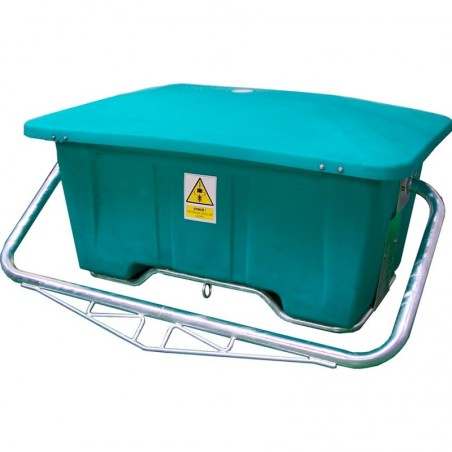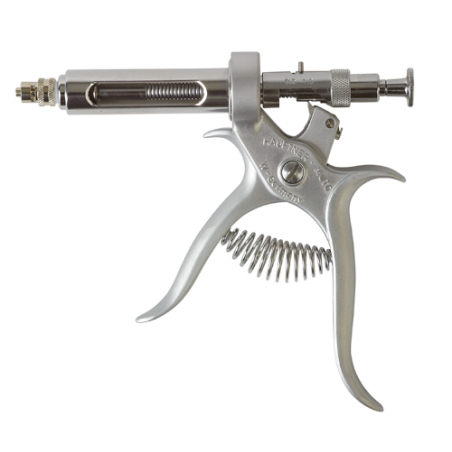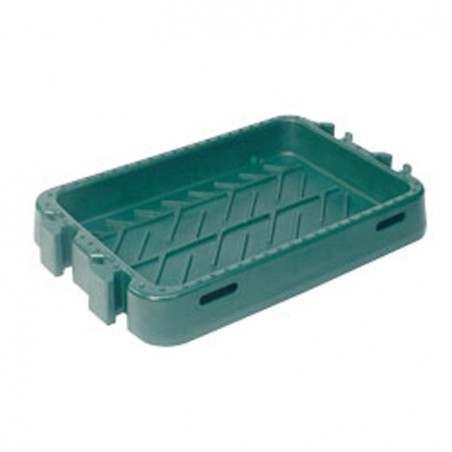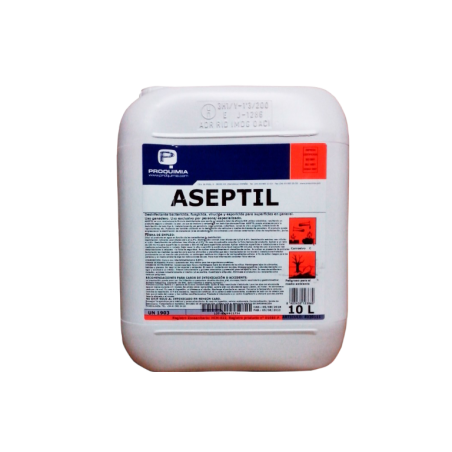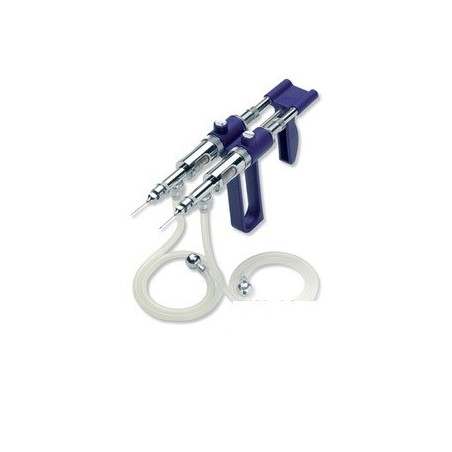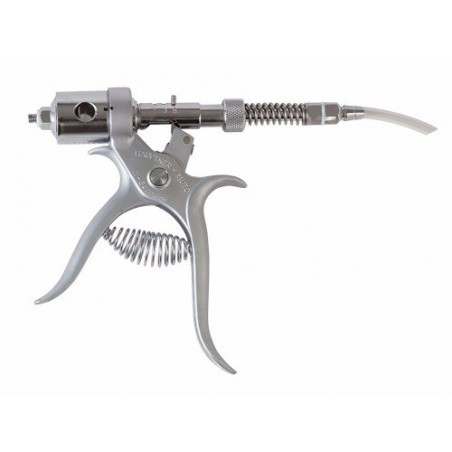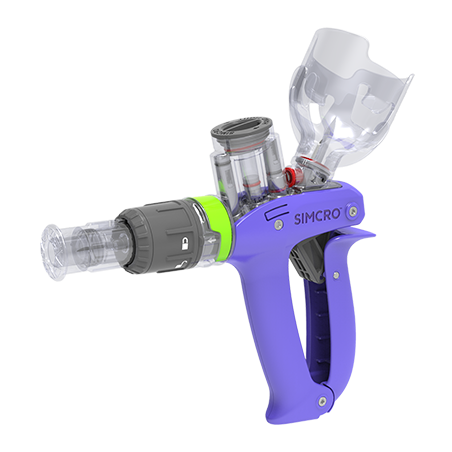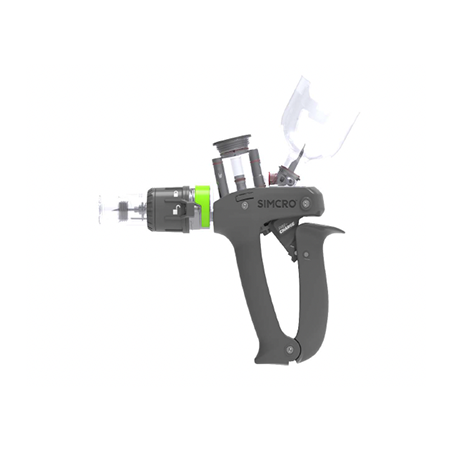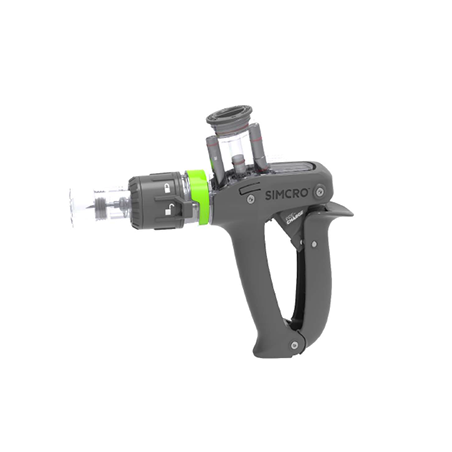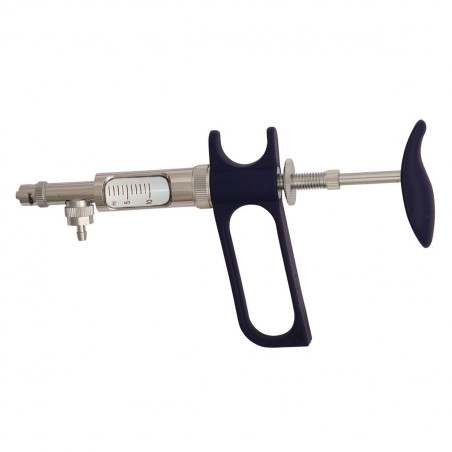In May 2022, the Danish national PRRS reduction strategy was launched by a united pig sector with the overall objective of increasing the number of herds declared PRRS seronegative by the year 2025.
The main elements of the strategy are mandatory declaration of the serological PRRS status of all pig herds and an expected reduced price of PRRS virus-positive pigs at delivery for slaughter of DKK 0.20 per kg (= 0.027 euros/Kg carcass) the first 17 weeks that a herd is PRRS virus-positive, and the deduction will subsequently increase gradually.

Danish pig production has good preconditions for combating PRRSV at national level:
- there is no import of live pigs
- nucleus and multiplier herds are PRRSV negative
- there is access to high-quality databases for geographic location of herds, health status and trading/movement of pigs.
- Denmark is surrounded by sea, which limits the risk of infection from neighboring countries.
By May 2023, 85% of all Danish pig herds have declared their serological PRRS status, and due to a new executive order issued by the Danish Veterinary and Food Administration, it is expected that all herds will have a PRRS status by the end of 2023. The national prevalence of declared seropositive pig herds in Denmark is currently 28%. The monitoring program are based on yearly blood samples analyzed for PRRS antibodies (Type 1 & 2) and clinical examinations by producers and veterinarians. Table 1 shows the distribution of pig herds by production type and PRRS serological status as of January 2021 and May 2023.
Table 1. Distribution of pig herds by production type and PRRS serological status as of January 2021 and May 2023. Based on data from the CHR (Central Herd Register) and SPF database. Includes declaration of both PRRS1 and PRRS2.
| Sow herds | Farrow to finish herds | Finisher herds | ||||
|---|---|---|---|---|---|---|
| January 2021 | May 2023 | January 2021 | May 2023 | January 2021 | May 2023 | |
| PRRS seronegative | 57% | 62% | 45% | 59% | 23% | 51% |
| PRRS seropositive | 26% | 28% | 12% | 22% | 12% | 29% |
| Under eradication | 0% | 3% | 0% | 1% | 0% | 3% |
| PRRS unknown | 17% | 7% | 43% | 18% | 65% | 17% |
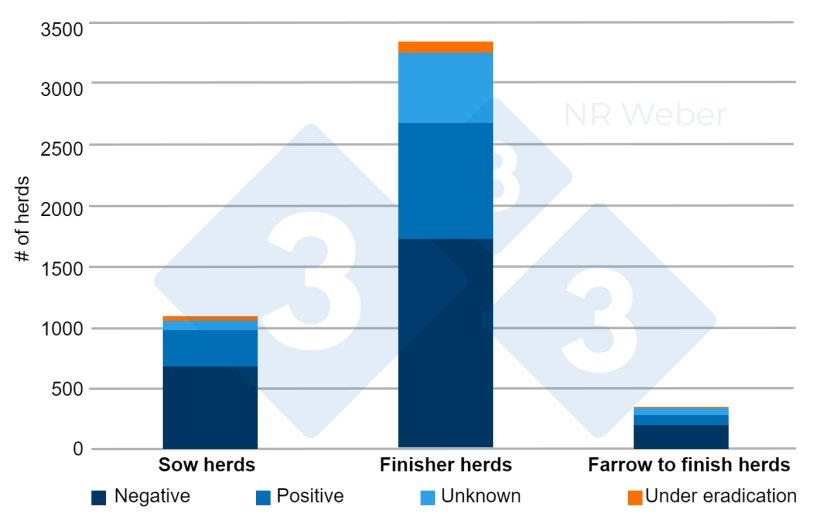
In the past year, the Danish Agriculture & Food Council has taken a range of initiatives with the purpose of paving the road for a national reduction of PRRS, including an implementation strategy, digital tools, common guidelines for the classification, monitoring, and eradication of PRRSV, and project funding resources.
The focus has been on developing area maps that provide real-time visualization of the geographical distribution of pig herds by PRRS status, and giving access to all farmers, veterinarians, and advisors. This makes it possible to coordinate PRRS eradication locally on a professionally informed level. The area maps, which are based on data from the CHR register and SPF database, also include real-time information on trade patterns between farms, with information on the PRRS status of the traded pigs.
Overall, we have real-time knowledge of where the pigs are, their PRRS status, and the trading patterns.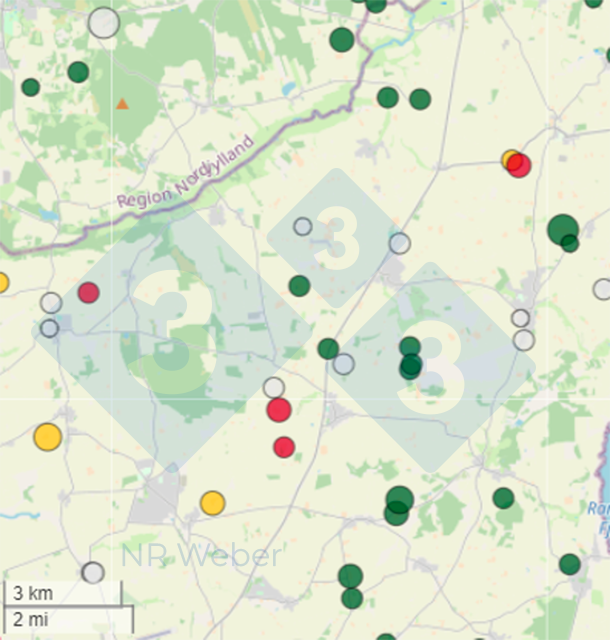
Status on regional eradication programs
To achieve the overall objective of the national reduction strategy, it is necessary to establish regional eradication programs. The Danish Agriculture & Food Council has organized the first regional eradication programs by designating regions with a high density of PRRS seropositive herds and appointing local program coordinators. The coordinators' main responsibility is to bring veterinarians and pig producers in the area together to develop and execute a common strategy for reducing PRRS in the geographical area.
To ensure that a systematic approach is applied, Danish veterinarians have agreed to work according to common guidelines for the classification, monitoring, and eradication of PRRSV.
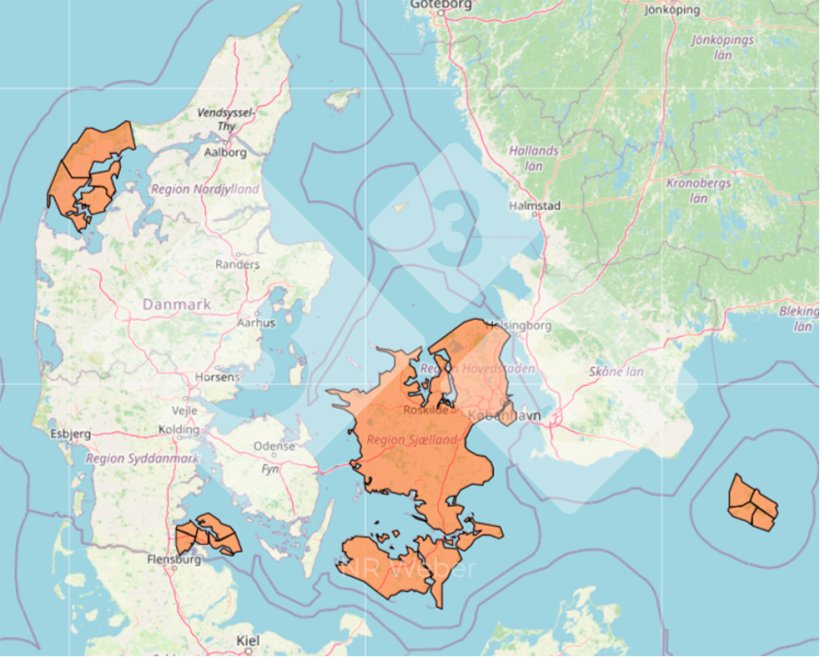
Next steps
Following the new regulations that mandate the declaration of serological PRRS status of all pig herds and a reduced price of PRRS virus-positive pigs at delivery for slaughter, an economic pressure is applied on PRRS seropositive finisher herds. Consequently, the demand for PRRS seronegative piglets, and thereby the price, will increase, and this will motivate the eradication of seropositive sow herds. As a result, more producers will begin to coordinate locally to control and eradicate PRRSV, followed by the establishment of even more regional eradication programs.






